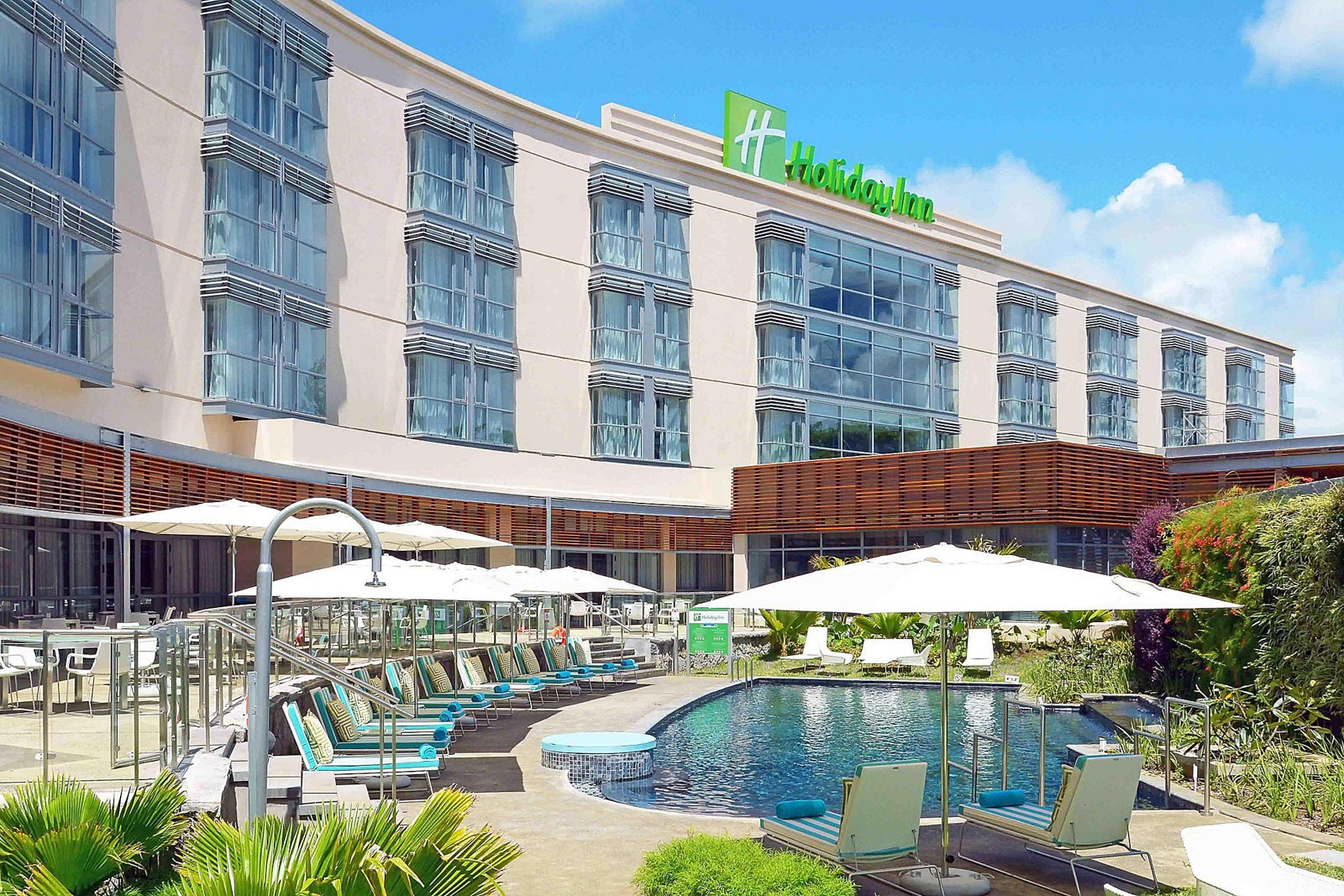
This major hotel company is leading the pack on business travel recovery
The death of business travel demand might have been greatly overestimated during the pandemic.
Bill Gates, at one point, surmised as much as half of business travel demand was permanently killed during the early months of the pandemic. Hotel industry chatter in recent months focused on the idea it was likely 20{60d48124524c163d93bcaf9d238c122260f539381ea62c0bffb11c8cd8c23591} off pre-pandemic levels.
However, the CEOs of each of the major publicly traded hotel groups in recent weeks reported a rosy picture of business travel.
Keith Barr, the CEO of Holiday Inn and InterContinental owner IHG Hotels & Resorts, delivered one of the strongest cases for a full business travel demand recovery Tuesday. Average nightly rates for business travelers already exceed 2019 levels (and they have since March of last year). Occupancy rates for this demand sector are at 98{60d48124524c163d93bcaf9d238c122260f539381ea62c0bffb11c8cd8c23591} of 2019 levels, Barr said.
“Despite some predictions, business travel is alive and well,” he added.
For comparison: Marriott last week reported a 90{60d48124524c163d93bcaf9d238c122260f539381ea62c0bffb11c8cd8c23591} business travel recovery, while Hyatt’s business traveler performance is still 18{60d48124524c163d93bcaf9d238c122260f539381ea62c0bffb11c8cd8c23591} below 2019 levels. Hilton CEO Christopher Nassetta noted earlier this month that business travel performance at his company was 3{60d48124524c163d93bcaf9d238c122260f539381ea62c0bffb11c8cd8c23591} higher than pre-pandemic levels.
IHG’s success with business travelers might seem a little surprising since its footprint of large hotels in major U.S. business districts isn’t as prominent as that of Sheraton, Westin or Hyatt Regency.
What’s driving IHG and Hilton to lead the competition? A greater focus on small- and medium-sized businesses. Workers at these kinds of companies tend to be on the road because they can’t work remotely the way those who work in fields like consulting and finance at larger companies can.
IHG’s significant presence of affordable roadside hotels also lends itself to durable lines of business travel demand from sectors like infrastructure and health care — some of the only sectors still taking part in business travel during the worst months of the pandemic.
Sign up for our daily newsletter
In 2021, Nassetta indicated a plan to adjust Hilton’s business travel demand profile from 80{60d48124524c163d93bcaf9d238c122260f539381ea62c0bffb11c8cd8c23591} reliant on smaller companies to 90{60d48124524c163d93bcaf9d238c122260f539381ea62c0bffb11c8cd8c23591}. The company’s earnings call earlier this month indicated Hilton now gets about 85{60d48124524c163d93bcaf9d238c122260f539381ea62c0bffb11c8cd8c23591} of its business travel demand from small- and medium-size companies.
Marriott gets about 60{60d48124524c163d93bcaf9d238c122260f539381ea62c0bffb11c8cd8c23591} of its business travel traffic from these kinds of companies, the company’s CEO, Anthony Capuano, indicated last week.
“We’ve seen slower albeit steady recovery from larger companies, but they have got a bit of a ways to go to get back to pre-pandemic levels,” Capuano added on an investor call. He also noted larger companies are now paying higher rates than they were over the last few years.
Leaning into luxury
It might seem like a brand dance in the hotel orbit at the moment. Marriott and Hilton both have plans to add more affordable options to their respective brand families, while Hyatt leaders last week doubled down on luxury hotels.
IHG is similarly focusing on expanding into higher-end tiers of the hotel orbit.
“We have strengthened and diversified our brand portfolio by filling in white spaces through organic launches and acquisitions of brands that address clear long-term consumer trends and capitalize on notable growth opportunities,” Barr said.
Some of the company’s luxury and lifestyle brand additions in recent years include the acquisitions of Six Senses and Regent as well as the launch of the Vignette Collection.
Luxury and lifestyle hotels now account for 13{60d48124524c163d93bcaf9d238c122260f539381ea62c0bffb11c8cd8c23591} of IHG’s overall portfolio and 20{60d48124524c163d93bcaf9d238c122260f539381ea62c0bffb11c8cd8c23591} of the hotels currently in various stages of development. Six Senses has more than doubled the number of hotels in development since IHG acquired it four years ago, Barr said.
IHG also opened three new Regent hotels since acquiring it; the full opening of Regent Hong Kong later this year is one of TPG’s most-anticipated openings of 2023.
IHG isn’t forgetting its bread and butter, though: The Holiday Inn brand family still accounted for a third of new hotel deal signings last year and about half of the total openings.
Eye on the economy
A giant question mark remains over the global economy, and whether government bodies and financial institutions can achieve a soft landing while trying to rein in inflation.
While the U.S. stock market fell Tuesday afternoon amid worries interest rates are going to remain higher than expected, Barr earlier in the day remained upbeat — as many of his competitors have in recent weeks.
“There is no escaping that there are macroeconomic uncertainties, and these may impact corporate travel budgets and leisure spending at some point,” he said. “However, economists’ latest view support more of a soft landing and we shouldn’t forget that. For our industry, the timing is such that we will benefit from many areas of demand still returning.”
An international travel revival — paired with China’s reopening and an ongoing recovery of group and business travel — gives hotel executives reason to expect more demand will flow into their properties.
We’ve said it before, and we’ll say it again: Don’t bank on downturn fears fueling any discounts at your favorite hotel anytime soon.
“While both the industry and IHG cannot be immune to economic cycles, we are confident that the current industry tailwinds outweigh the headwinds, both in number and magnitude,” Barr said.
Related reading: